WILL ARTIFICIAL INTELLIGENCE CHANGE ASTRONOMY?
All About Space UK
|Issue 146
With computers growing smarter than ever, training them how to spot and categorise astronomical objects could lead to a plethora of breakthroughs

The world is currently in the grips of an artificial intelligence (AI) frenzy. Everyone is trying ChatGPT, AI stocks are surging to record highs and people are worried about whether machines are coming for their jobs. Yet astronomers have been using similar techniques to unlock the universe’s secrets for decades. “It goes back over 30 years,” says Chris Impey from the University of Arizona. In 1990, Impey’s colleagues at the university’s Steward Observatory used an artificial neural network (ANN) to both divide galaxies into groups based on their appearance and to distinguish between stars and galaxies in images of the sky. An ANN is fed a series of training images and is then set free to analyse new data. It looks for connections between data points and is based on a simplified version of the human brain.
Classifying galaxies is intricate work. “Humans can’t do it well enough,” Impey says. Deciding whether a galaxy is a spiral or an elliptical may be fairly straightforward, but smaller details can be crucial. The galaxy may or may not have a bar structure in the centre, be asymmetrical or have distortions close to its outer edge. “That might tell you that the galaxy had an interaction with a neighbouring galaxy that has long since sailed off to a different part of space, but the distortion remains,” Impey explains. “The distortions are subtle, a per cent or less.” It’s a bit like human scars. These small marks on our bodies tell a story about where we’ve been and the things that have happened to us.

This story is from the Issue 146 edition of All About Space UK.
Subscribe to Magzter GOLD to access thousands of curated premium stories, and 10,000+ magazines and newspapers.
Already a subscriber? Sign In
MORE STORIES FROM All About Space UK
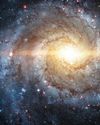
All About Space UK
MYSTERIES OF THE UNI WHERE ARE ALL THE SPIRAL GALAXIES?
There are far fewer spiral galaxies than elliptical ones in the Supergalactic Plane, and scientists are keen to discover why
7 mins
Issue 161
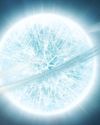
All About Space UK
ZOMBIE STARS
+10 OTHER TERRIFYING SPACE OBJECTS
8 mins
Issue 161

All About Space UK
HOW TO BEAT LIGHT POLLUTION
Thought it was impossible to observe the wonders of the night sky from towns and cities? Think again. Follow our tips and tricks on successfully observing through sky glow
2 mins
Issue 161
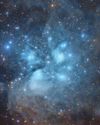
All About Space UK
15 STUNNING STAR CLUSTERS
These beautiful stellar groupings are spattered across the cosmos
8 mins
Issue 161

All About Space UK
Eileen Collins "It was a difficult mission...we were the first to see Mir"
Having served as both the first female pilot and first female commander of NASA's Space Shuttle, Collins boosted the involvement of women in space exploration to a whole new level
9 mins
Issue 161

All About Space UK
MARS LEAKS FASTER WHEN IT'S CLOSER TO THE SUN
The Red Planet has lost enough water to space to form a global ocean hundreds of kilometres deep
2 mins
Issue 161
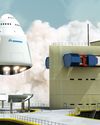
All About Space UK
FUTURE TECH KANKOH-MARU
This ambitious reusable spacecraft will be capable of taking 50 people to and from orbit
2 mins
Issue 161

All About Space UK
THE FINAL FRONTIER
Beyond the reach of the Sun is a fascinating region of the cosmos that were only just beginning to explore
8 mins
Issue 161
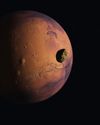
All About Space UK
A long-lost moon could explain Mars' weird shape and extreme terrain
A long-lost moon could explain why Mars is so different from the other rocky planets in the Solar System. Today Mars has two tiny moons.
2 mins
Issue 161
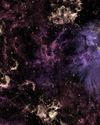
All About Space UK
A sprinkling of cosmic dust may have helped kick-start life on Earth
Cosmic dust may have helped kick-start life on Earth. New findings challenge a widely held assumption that this wasn't a plausible explanation.
3 mins
Issue 161
Translate
Change font size

